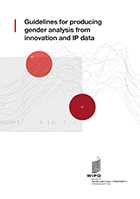Innovation Gender Gap: 4 Asian-Pacific Initiatives to Narrow the IP Gender Gap
As nations around the world become increasingly aware of the importance of gender and diversity gaps in innovation, many have implemented policies to reduce these gaps. A panel of representatives from the Philippines, Singapore, People’s Republic of China and India present and discuss their respective national policies and programs. Learn more about these initiatives!

WIPO and Invent Together held the third edition of the IP Gender and Diversity Gaps webinar focusing on the Asia-Pacific Region on November 30 and December 1, 2022. Watch the High-Level Policy panel session.
The Philippines
The Intellectual Property Office of the Philippines (IPOPHL) has established a promising series of programs in favor of women empowerment. The Juana Patent for Patents Program is supporting eligible women inventors and women-led startups by waiving the fees when they apply for invention patent grants or register their utility models or industrial designs. This program builds on the success of its trademark predecessor, the Juana Make a Mark Program. In 2020, the IPOPHL also launched the Women In IP magazine to further encourage and empower women to become active players in intellectual property creation, protection and commercialization in the country.
Singapore
Singapore is addressing the gender and diversity gaps further upstream in the process, by ensuring that employment practices are fair, responsible and progressive. In 2006, the Ministry of Manpower, National Trades Union Congress, and Singapore National Employers Federation formed a Tripartite Alliance for Fair and Progressive Employment Practices (TAFEP). According to the alliance’s guidelines, employers must recruit and select employees based on merit (such as skills, experience or ability to perform the job), and regardless of age, race, gender, religion, marital status and family responsibilities, or disability. The Singapore IP Office established procedures to ensure that it drafts IP policies in an inclusive manner.
People's Republic of China
In the same vein, China implemented different policies to create a fair work environment for women. The China National Intellectual Property Administration (CNIPA) encourages women to develop their professional skills, express their opinions, join management positions, and participate in IP high-level talents selection.
India
The Department of Science and Technology of the Government of India established the Women Scientists Scheme (WOS) to support women’s re-entry in the science and technology (S&T) workforce after a career break. The scheme splits in three main programs:
- WOS-A offers fellowships to women scientists and technologists to support their return to mainstream science.
- WOS-B focuses on supporting projects with a societal impact, identifying a societal challenge and delivering possible solutions by means of developing a technology or technique and/or a lab-to-land technology transfer.
- WOS-C, also known a KIRAN-IPR, trains women scientists in Intellectual Property Rights and their management for a duration of one-year, including 4-to-6 weeks of classroom teaching and orientation, and the remaining 11 months are hands-on training at attorney offices, patent offices, IPR units of the Government of India, academia and Industry. This program already trained about 800 women over the past twelve calls, of which around 60 percent are pursuing a career in IPR.
Do you know of other initiatives or programs in the region that are not listed in this article? Please feel free to contact us and we will be happy to add it!
Related stories

Gender equality: Japan's effort to leave no one behind
Asia’s rapid economic growth is well documented throughout the years. Despite this strong growth, female inventors seem to be left behind. Read on to find out how Japan is trying to address this innovation gender gap.

4 Indicators to Measure Gender Gap in Innovation
There are several measures of gender gaps in innovation. However, choosing the “right” indicator depends on the purpose. Here are some suggestions on what to consider when choosing the type of indicator.
Related resources

Guidelines for producing gender analysis from innovation and IP data
Understanding how women and men can access and use the intellectual property (IP) system equally is key to ensuring that their ingenuity and creativity translates into economic, social and cultural development. This short guide summarizes best practice for producing innovation and IP gender indicators.